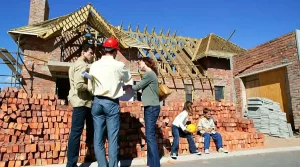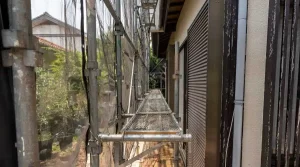The quality, feel, and lifespan of your custom home’s roof, as well as its price, are all greatly influenced by it. Your homeowner’s association might have rules governing the color, style, or pitch of your roof as well as the types of materials you are permitted to use. If not, you can learn about the various materials available and select the best roofing material for your home by doing some research.
You now have more options than ever thanks to advancements made in roofing materials over time.
Design and Material Selection for Roofs Based on Specifications
It depends on a number of factors what kind of roofing material you should consider for your house.
- The architectural style of the home affects the layout of your roof. Most types have various roof lines and materials that contribute to the overall appearance.
- Typical roofing colors and materials are frequently recommended by homeowner associations. Community covenants and rules may forbid you from using a specific type of roofing material or restrict the color you can use. In addition to fire and weather safety standards, some local building codes also include criteria for energy efficiency or the use of environmentally friendly materials.
- The exterior of your house should match the color of the surrounding area and neighborhood. Numerous hues are additionally considered to be more energy-efficient color choices.
- The roof rating takes into account the anticipated lifespan of the roof under normal wear and tear, as well as its energy efficiency through color, reflectance, emittance, and sustainable material choices.
- The environment and local climate, particularly the amount of precipitation and humidity, may have an impact on the choice of roofing material.
- Your particular budget may also affect the type of roof you decide to install on your home. A roof replacement is an expensive investment that you may not want to make frequently, so if you have a little extra cash available, consider how long and durable your roof will last.
Prior to choosing the roofing material you want to use for it, make sure it complies with local regulations AND blends well with the aesthetic and architectural style of your property.
Roofing Materials
There are many different and abundant roofing material options. The most well-liked ones are listed below, with prices increasing from lowest to highest.
A Pair Of Asphalt-Based Shingles
Roofing materials made of asphalt and asphalt composite shingles are the most widely used and least expensive. The two materials that are most frequently used to make it are fiberglass with asphalt and granules base, or recycled paper saturated in asphalt. It is frequently employed and available in a variety of colors. Although thought to be easy to install and maintain, asphalt roofs can be strengthened with fiberglass or organic materials to increase their longevity.
Pros:
- They are not only easily replaceable, readily available, affordable, and available in a variety of colors.
- Asphalt shingles can reflect light to improve a home’s energy efficiency if they are painted in lighter colors. Some shingles might also emit light in addition to lowering energy requirements.
- Choose fiberglass shingles, which are thought to provide excellent fire protection, to save money on your homeowners’ insurance.
Cons:
- As far as roofing materials go, asphalt shingles don’t last very long; they typically last 20 to 25 years, but if they’re built cheaply, they could last as little as 10 years.
- They offer very little to no insulation on their own, and their quality varies greatly.
- Despite being recyclable, they are not thought to be sustainable. Normally, trash is where this stuff ends up.
Shingles Made Of Wood And Shakes
Wood shingles and shakes will make your roof appear more natural. Shakes, which are hand-cut from wood blocks and have a more rustic appearance, are in contrast to shingles, which are machine-cut and have smooth surfaces and clean edges.
Pros:
- There are many different types of wood available, including pressure-treated pine, redwood, cedar, and cypress.
- In comparison to asphalt shingles, wood shake, and shingles last five to ten years longer.
- The Class A fire rating of treated wood shingles may qualify you for an insurance discount.
- Many wood shakes and shingles are made out of trees that have fallen during storms and are recyclable.
Cons:
- Wood shingles that have not been treated have a Class C fire rating, which means that if they are not treated, your home insurance premiums may go up.
- In locations where flames frequently occur, wood shakes and shingles may not be permitted.
- Untreated, this type of roofing material necessitates frequent cleaning to prevent the growth of moss or algae, which makes it a high-maintenance material. The environmental interactions of wood oils and oils often result in staining.
Cement Shingles For Roofs
Concrete roof tiles have an uneven surface because they are made of lightweight concrete, but installation is straightforward. Some concrete mixes contain wood or clay fibers to increase strength without adding to the material’s weight.
Pros:
- Concrete tiles may go more than 50 years without needing to be replaced.
- They are not harmed by fire or insects.
- Concrete tiles come in a wide variety of forms, textures, and hues, and they are recyclable as well.
- The use of light-colored tiles will increase your home’s energy efficiency.
Cons:
- The tiles need additional support because they are heavier than most roofing materials, even though they are lighter than most concrete.
- If someone walks on your roof, it could break tiles, making roof repair difficult.
Steel and Steel with a Stone Coating
Metal roofs no longer use corrugated tin, which you may remember from old photographs. The durability of modern metal roofs, which are made of zinc, steel, copper, and aluminum, has made them very popular. Metal roofs are available in any color, pattern, or texture you can imagine, in addition to new variations on the corrugated design. Having them stone-coated will make clay tiles, asphalt shingles, or wood shakes even more realistic.
Pros:
- a resilient mindset’s significance. A 30–50 year warranty is typically included with metal roofing, which is thought to have a lifespan of 50–100 years.
- Many can withstand a Class A fire, saving you money on your homeowner’s insurance and preventing the spread of fire to your roof.
- Most metal roof components and the roof itself are made from recycled metal.
- Due to the rapid water and snow runoff from metal roofs in cold weather, ice dams are avoided.
- The most stringent building regulations are satisfied by a number of materials used for residential metal roofs.
Cons:
- Metal roofs are more expensive, copper in particular, when compared to wood and asphalt. The price is offset by the product’s durability and long life, though.
- Since this material can dent when hit by a heavy object, repairs are more expensive for it than for many other roofing materials.
- Firefighters may find it difficult to get through a metal roof when attempting to use water to put out a house fire.
Synthetic Floor Coverings
Artificial roofing materials include rubber, asphalt, clay, and plastic. A lot of the time, it looks like slate or wood. Numerous synthetic materials have been developed for flat and low-sloped roofs, which may be present on some of your custom homes.
Pros:
- Excellent results were produced by synthetic performance testing.
- Typical warranties range from 10 to 50 years.
- At least one type of thermoplastic single-ply, which is used on flat or low-pitched roofs, has been given the highest energy star rating of any roof material.
Cons:
- The lack of thorough research has prevented us from knowing how long synthetic materials last.
- Given that they are still fairly new, you should do extensive research before selecting a synthetic.
- A flat or low-pitched roof may not be allowed by your homeowner’s association, so the majority of synthetic materials are used for these types of roofs.
- Most subcontractors have little to no experience installing synthetic roofing materials, so your builder will need to educate both themselves and their sub on how to ensure proper installation.
Ceramic Stone
Slate tiles are used in your distinctive home, giving it a European appearance. Buildings in Europe have had slate tile roofs for over a thousand years.
Pros:
- Your custom home will have a regal, European feel thanks to slate.
- Slate lasts for a very long time, is recyclable, and needs only minimal maintenance.
Cons:
- Naturally occurring slate is very heavy. We’re talking a density of 1,500 pounds per 100 square feet. You’ll have to pay extra framing costs for support.
- A slate installation gone wrong will inevitably result in moisture problems.
- The slate that breaks apart when people walk on it makes roof repairs more challenging.
Clay Tile
Tile made of clay is frequently used in Spanish or Mediterranean-style architecture. It has been improved upon and strengthened over time for greater toughness and endurance. To the glaze or coating of the tiles, a waterproofing substance is frequently applied.
Pros:
- Clay can be counted on for at least 50 years.
- Clay tiles are impermeable to pests’ burning.
- Then, after use, they can be recycled.
Cons:
- Clay requires more framing support because of its weight, similar to slate.
- It is frequently the most expensive option for roofing materials, similar to slate tile.
- Tiles are brittle, which makes roof repairs challenging.
The roofing materials for your custom home come in a wide range of choices. Your top priorities when selecting a roofing material should be the material that best matches the architectural style of your home and whether or not your homeowner’s association has any roofing restrictions or regulations. However, there are many other factors that can also have an impact on your choice. Make sure to consult your trusted custom builder and architect for guidance on selecting the best roofing material for your home.










